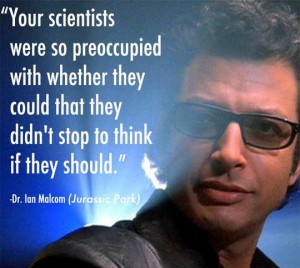I don’t think I know anyone else that loves Orca Whales as much I love them. I truly believe they are my spirit animal. It all started back in the 90’s and early 2000’s when the Free Willy franchise was on VHS and I had a prop necklace of a Native American riding on the back of a Orca that the protagonist of the movie was given to by a Native American man. Native Americans in the Pacific North West call them Blackfish believe that the Orca whale represents great power and to see one in person is a significant omen. The whale in those movies was Keiko, and his story deserves a whole post of his own. Jumping forward into the future my love for them began to grow all over again when the mistreatment of Orca whales became a trending topic in the Media. Sea World was put on the front page again when in 2013 CNN premiered a documentary called “Blackfish”, which highlighted the captivity of killer whales in Sea World and other marine life parks. If you have not seen it, I highly recommend it. The first time I watched it I was crying so hard that I was glad that my roommate had decided to go out that evening.

https://en.wikipedia.org/wiki/Blackfish_(film)
I believe that everything in life happens for a reason. After watching this film I reflected on the fact that the first time I went to Disney in Orlando I wanted to visit Sea World. I wanted to see the Killer whale show. But on the day we decided to go, the park was closed. In that moment I was disappointed and really sad. But that small shred of disappointment would pale in comparison to the regret I would feel as a young adult for endorsing not only a show but an entire corporation that damages the psyche of such a beautiful and intelligent creature. It’s one of the many examples where man has completely disregarded another life. A life that, in my opinion, is lived to fullest more than some human lives are. This may make me sound like a crazed animal rights activists, but one cannot simply know about these animals and not feel a passion for being their voice when they have truly been wronged and displaced; all for the entertainment of man.
I feel that it’s important to give a prime example to back up the the points that I am going to cover that prove why Orca Whales do not belong in captivity. I will be providing perspective from a book by David Kirby called “Death at Sea World: Shamu and the Dark Side of Killer Whales in Captivity” that I read that highlights Sea World, the science behind Orca’s complex social skills and what in their biology made them evolve that way. The star of this post is a bull Orca that has been in the business since he was baby and since growing up in a concrete pool gave him no stimulation, he has evolved into a psychological ticking time bomb that can only end in violence. His name is Tilikum.

http://www.seaworldofhurt.com/features/30-years-three-deaths-tilikums-tragic-story/
Tilikum is a 12,500 pound, 22 feet in length Orca whale (making him the largest Orca in captivity) that was captured in 1983 as a young whale, separating him from his pod. Orca whales travel in pods. Within these pods the whales have complex social skills which is reflected in how they interact with one another. One thing that I find most interesting about their family dynamics is that the male Orcas never leave their mothers side. from the time of birth till death they are within the vicinity of their mothers. The females in their societies are dominant and children are taught things and disciplined by the mother. One way that scientist have really seen their social interaction is when they hunt together as a pod. These families can be made up of at least 20 whales and made up of three generations; the grandmother, the mothers, and the children of the mothers. Day by day they work together strategically to lure their prey exactly where they want it before attacking and sharing their kill. A lot of the teaching that is done with the younger Orcas is very hands on, especially when it comes to hunting. When they are not hunting for food they are interacting with one another by playing, which sometimes includes tossing a live animal in the air and catching it, and jumping in and out of the water. Scientist have found that they are able to have such elaborated social lives because they have a part of their brain that humans do not. The area that is part of the Paralimbic region is more elaborated and larger than that of humans. This is where they are able to process complex emotions and thinking. It is because of this that they have evolved into having such dynamic social groups.
Orcas are separated into two main groups called Resident and Transient Orcas. Transient Orcas are native to the Pacific North West and Resident Orcas are native to Washington State, British Colombia and Alaska. Both of these groups are distinct in their food patterns which is the only real distinctive difference between them, i,e fish for Residents and marine mammals for Transients. Other differences between these animals are the structure of their dorsal fins and the saddle patch (grey spot on back) on transients is more forward on Transients. something that is common for all Orca ecotypes, including offshores, which are a least common and smaller form of the Orca species, is the fact that these creatures can live as long as human, and in some cases even longer than 80 years of age. Here is a video where you can get a sense of the hunting elegance of some Killer Whales teaching young ones on how to hunt and kill a male elephant seal

http://captivecetaceans-tragicallysad.blogspot.com/2014/09/is-tilikum-transient-or-resident.html
From the area of Iceland that Tilikum was captured and the characteristics of the whales that are in that area, he is more than likely a Resident Orca, who just like his counterparts is in need of his mother, social interactions, swimming hundreds of miles a day, and doing something as basic as hunt for his own food. Instead, he is reduced to floating in a pool that is too small for him to live in and be spoon fed fish that is filled with medicine that go against his natural genetic makeup. Since he was captured Tilikum has killed three people that have gotten to close to him and the two trainer incidents happened 20 years apart from one another. The Dawn Brancheau case became the turning point in history when it comes to questioning the ethics behind having such a majestic animal like the Orcinus Orca in captivity. It can be looked up anywhere, that there is no record of a Killer Whale harming a human in the wild. They are just as curious about us as we are about them and are known to come up to boats to interact with humans and be playful. Another scary thing that the documentary pointed out is that since Tilikum is a bull, he has been the main contributor to their breeding program. Since there is a history of aggression with this Orca, does it make sense to develop an entire breeding program around him? No. But to a corporation bent on making money at all costs, in that case, they don’t care. Now, there isn’t much scientific evidence on this, but on the outside, its disturbing to think that this whale is used as a sperm bank, one cannot help but wonder if his aggression will be passed down to his offspring. Here is a link to Tilikum’s “family tree”.
I could go on and on about this topic but I highly encourage anyone who is interested to read the book I mentioned above, and watch the documentary as well as others about these beautiful creatures.
Source:
Kirby, David. Death at SeaWorld: Shamu and the Dark Side of Killer Whales in Captivity. New York: St. Martin’s, 2012. Print.








